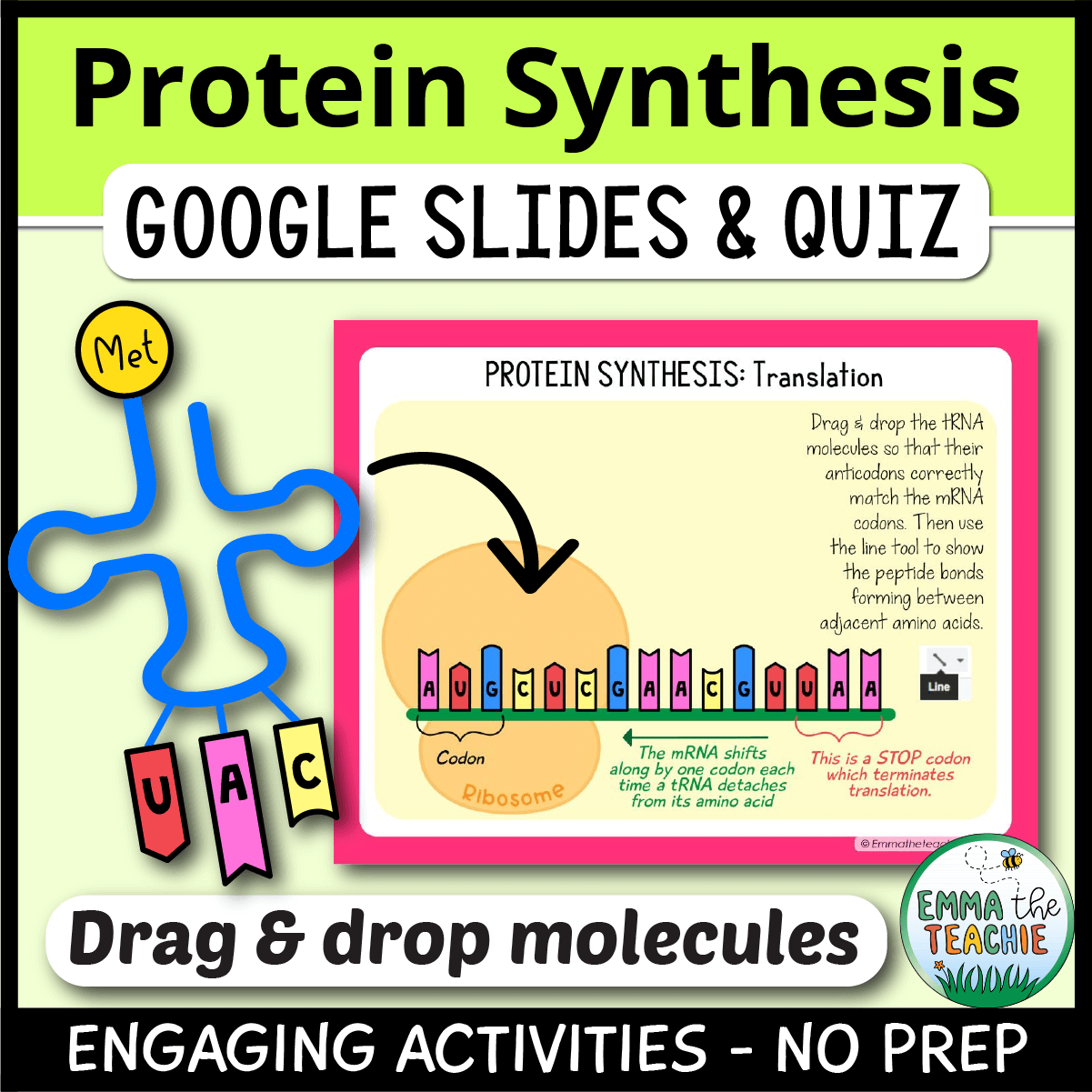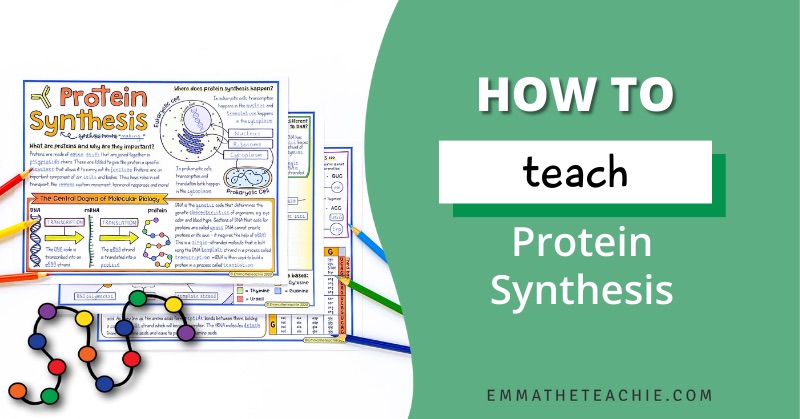
How to Teach Protein Synthesis
Protein synthesis is an important part of biology that all living things need to do. Protein synthesis is also a crucial part of your students’ biology course.
The truth of the matter is… many students find protein synthesis boring, and even more students shut down because of its difficulty.
This is where you come in!
As a teacher, it is important to make this topic engaging and accessible for your students.
Let’s take a look at some ways to teach protein synthesis.
Review the basics
A key part of protein synthesis is understanding the difference between DNA and RNA.
And while you’ve probably already covered this with your class, a quick refresh will help your students remember these differences!
I suggest comparing DNA and RNA with a Venn diagram. You can remind students which bases are found in each type of nucleic acid, and the rules of base pairings.
You may also want to review what proteins actually are, discussing their structure and various roles in the cell.
Done? Ok, now you’re ready to get started with the actual process of protein synthesis!
Start with the BIG picture
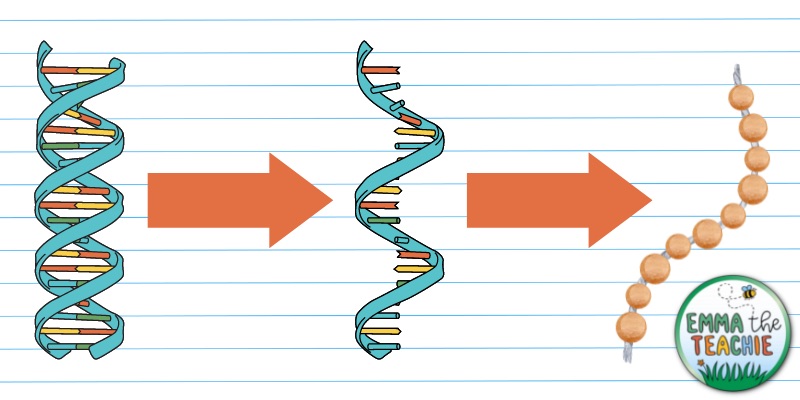
When students hear the words transcription and translation, their eyes glaze over and their brain panics – “uh-oh, this sounds complicated!”
Start with the big picture overview of protein synthesis before introducing these terms. We have DNA and we want to build a protein. DNA is too large to leave the cell, so we need to use a messenger – we call it messenger DNA, or mRNA.
For a big picture overview, I love using Doodle Notes. As protein synthesis is a complicated process, I recommend completing these together as a class.
Use a visualizer, document camera, or project a blank copy on your board.
Then work through each step, with students following along on their own copy of the Doodle Notes. This helps students build up a really clear idea of the stages of protein synthesis.

I have created a beautiful set of Doodle Notes for protein synthesis.
The benefit of these Doodle Notes is that they start with an overview of the process. And then the second page is just for transcription, and the third page is for translation.
This really helps students separate the two stages of protein synthesis in their minds!
You can also use videos to help students get an overview of protein synthesis. If you haven’t read it, check out my blog post on the 10 Top YouTube Channels for Biology. For protein synthesis, I recommend the Amoeba Sisters, but there are lots of other awesome channels.
Use hands-on activities to teach protein synthesis
Hands-on activities will always be beneficial to students.
These activities can help students understand the abstract idea of protein synthesis by making it more concrete and easier to understand.
For example, you could have students create models of the different parts of a protein using clay or pipe cleaners, and have them use colored beads to represent the different amino acids that make up a protein.
You could also split the class into groups and create paper models of each part of protein synthesis – e.g. one group creates a mRNA strand, another group creates tRNA molecules, and a third group creates the resulting polypeptide chain. Then bring them all together and act out the stages of protein synthesis using their models!

Use Google Slides for practice
Google Slides are an excellent tool for developing interactive exercises and games for students. They are also awesome for helping students visualize concepts, as they are bright and in full color!
Activities such as highlighting and annotating passages, as well as drag-and-drop activities and fill-in-the-blank questions, are some of the activities that you can use to make protein synthesis easier to comprehend.
You can even use Google Slides to build models of each stage of protein synthesis.
For example, you can let students build a mRNA strand by dragging and dropping the correct bases into position.

Then students can work out the resulting polypeptide chain, by dragging and dropping tRNA molecules with the correct anticodons into position.
This is such a great way for students to visualize a complicated process!
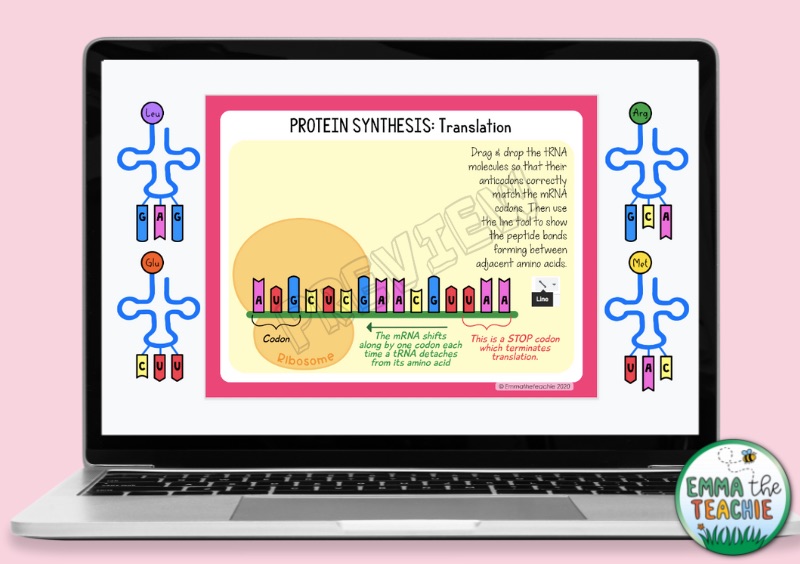
Another perk?
Using Google Slides activities makes differentiation a piece of cake!
Differentiation in the classroom is extremely important, especially during a tough topic like protein synthesis. All you have to do is change the activity to give different students the extra help they need.
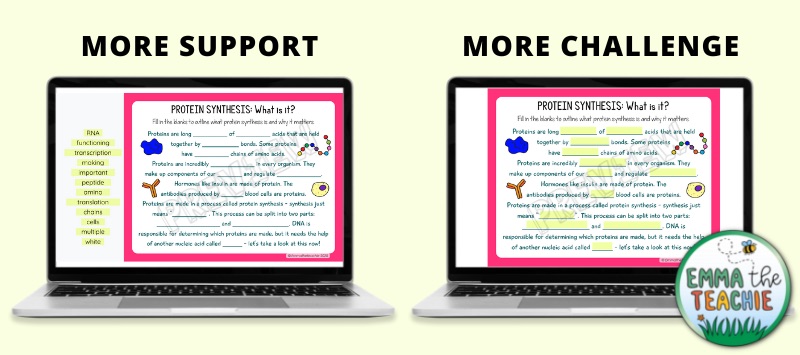
Use Google Forms Quizzes to assess progress
As you move through your protein synthesis unit, you can usually tell who is still with you and who has fallen off, right?
One way to know (for certain) who understands protein synthesis and who doesn’t, is to use Google Forms Quizzes to check for understanding, address learning gaps, and rectify misconceptions.
Google Forms Quizzes can be used multiple ways during your protein synthesis unit. These quizzes make great formative assessment checkpoints to assess your teaching methods and determine if a concept needs to be retaught. You could also use Google Forms Quizzes as your summative assessment!
Want to know a secret? Come here…
Google Forms are self-grading, which means more time for you!
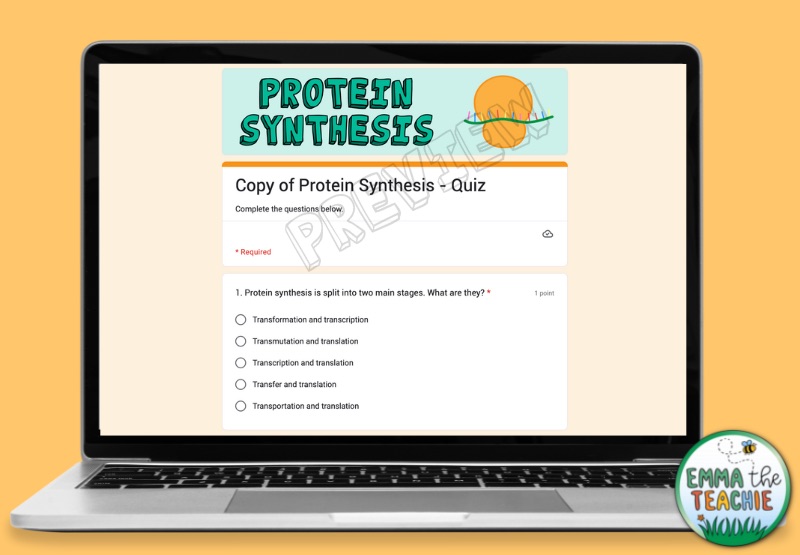
Teaching protein synthesis doesn’t have to be painful
I hope you have discovered some new and fresh ideas that will make your protein synthesis lesson easier for your students to understand – and more fun for you to teach!
I also want to make your life easier! That is why I created my Protein Synthesis bundle.
These are ready to use Google Slides, 4 pages of differentiated Doodle Notes, and a Google Forms Quiz.
Happy teaching!




